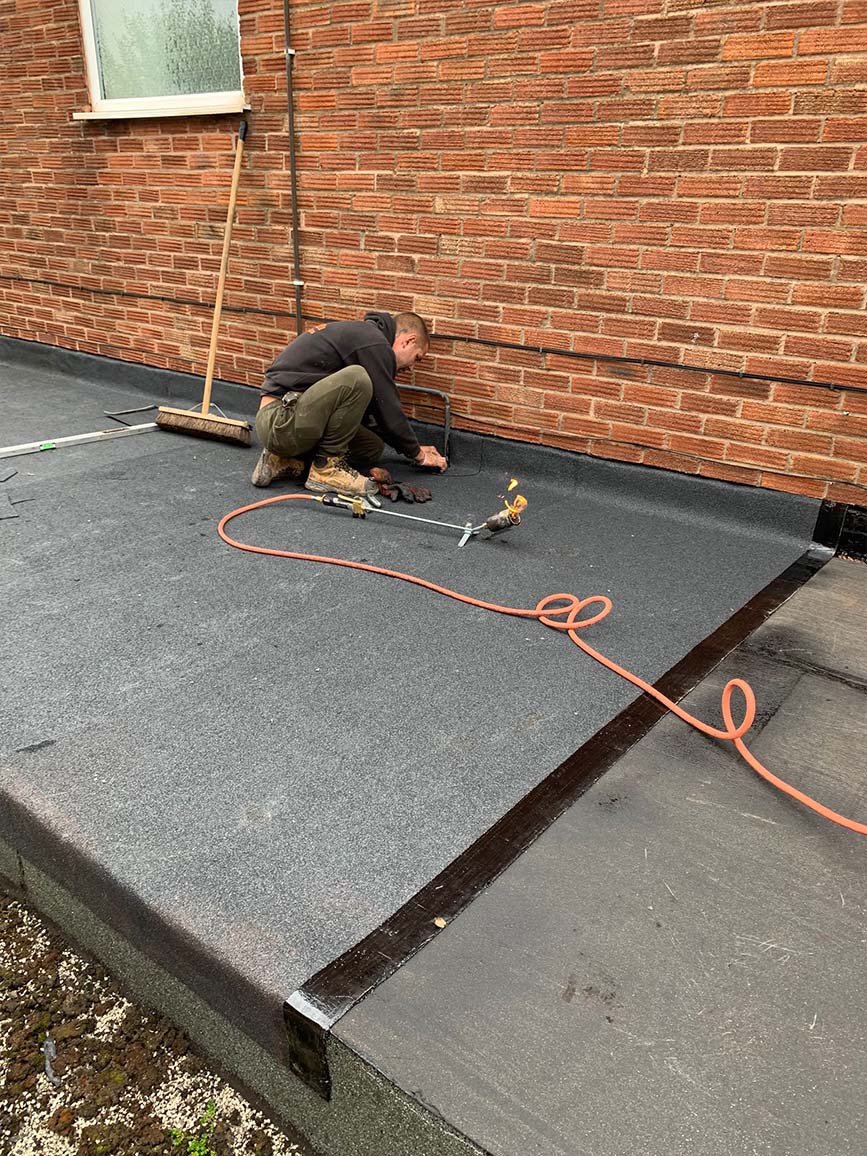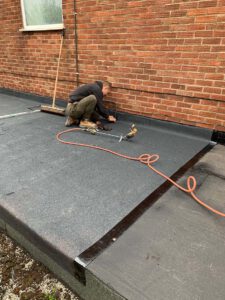Flat Roof Repair: How to Properly Maintain Your Flat Roof

Whether you own a home or a commercial building, your flat roof is an important part of your property. It’s essential to keep it well maintained to prevent leaks, mold growth, and other issues that can negatively affect your property.
If your flat roof is leaking or exhibiting any of these problems, call Flat Roof Repair as soon as possible to inspect and make necessary repairs.
Debris can be a common problem with flat roofs. The accumulated dirt, leaves, and debris can clog drains, which can cause leaks and damage the roof. This is why it is important to clean the roof regularly so that it can flow freely.
When removing debris from a flat roof, there are three options: pick-up, leaf blowing, and pressure washing. The latter two are recommended because they are much easier and safer to use.
Before attempting to clear the debris off your flat roof, it is important to make sure that you have all of the necessary equipment. You will need a sweeping brush, a hand brush, and a hose that has no pressure.
The first option is to sweep the area around the drains, ensuring that there are no branches or limbs blocking the drainage system. This can prevent ponding water from pooling on the top of the roof and causing a leaking problem.
This is particularly important during the winter months, when windy weather can bring trees down, leaving a lot of debris on the roof. The leaves, needles, and debris will then clog the gutters and drains, preventing water from flowing off the roof.
To prevent this, it is best to clear the roof after a storm. Then, check the drains and scuppers to ensure that they are working properly.
If there are any issues with your roof’s drains or scuppers, call in a professional. They will regrade the drains and scuppers so that they can properly drain water off your roof.
A professional will also take the time to inspect all of your gutters, drains, and scuppers for any obstructions or leaks. This is a good way to spot any problems before they turn into big issues and are too late to fix.
While it is possible to remove a large amount of debris from a flat roof, it is usually better to leave this to professionals who have the expertise and experience required for this type of job. They can do a better job and will be able to keep your roof free of debris so that it is functioning properly and keeping your property safe from the elements.
When it comes to flat roof repair, flashing can be a key element in the success of your repairs. This thin sheet of waterproof material is designed to prevent leaks in your roofing system, especially in the areas that are most vulnerable, such as around chimneys and skylights.
Flashing is made from durable materials, usually metals such as aluminum or steel, and is installed in places where a flat roof meets a wall or other feature. These places are prone to expansion and contraction as a result of heat and moisture changes in the environment.
The flashing also helps keep water from entering the building where it is not meant to be. This can be at the base of a masonry wall where it meets a roof or at an opening in a brick wall that meets a shingled area of the roof.
There are different types of flashing that can be used at these locations. One type, step flashing, is shaped like an uppercase “W” and fits snugly over the valley between two roofing systems. Another type, cap flashing, is shaped more like an L and fits around areas where a building wall or roof meets with a window.
Regardless of the type of flashing, it has to be installed with care and properly engineered so that water is deflected away from the building when the roof is in use. If not, water could get inside and cause extensive damage to the building.
You should always inspect your flashing for any signs of wear or deterioration, such as discoloration. This is a sign that the flashing is aging and has to be replaced.

